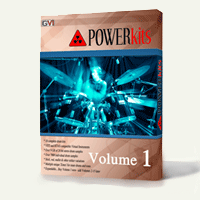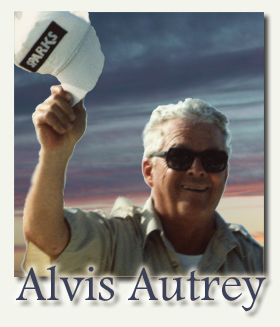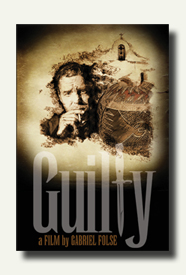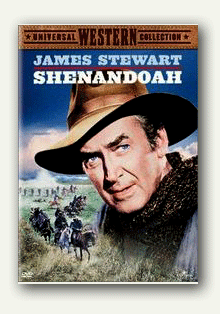by Gary Powell

I’ve been using “Larry Seyer’s Acoustic Drums” library since its release for the GigaStudio platform in 2005! When programming drum samples is appropriate I have implemented Larry Seyer’s library with stellar success creating happy clients. Larry has now reformatted these same samples as a virtual instrument called POWERkits. It’s difficult to explain something as complex as all this in a non-technical way for my readers who are not studio geeks, so here goes anyway.
Larry and drummer Pat Mastelotto record individual drums hits on many different kinds of drums with many different kinds of sticks. Also, each drum head is struck in eight different zones spaced in concentric circles with each zone being recorded separately one hit at a time.  Also, drum strikes or hits are recorded at many different volume levels. This massive amount of information is then digitally edited, stapled, stamped, washed, rinsed and spun-dried into a “virtual” instrument meaning at the end of the process all these drum sounds can all be played on a digital piano (we call it a controller) with each drum hit having been assigned to a different key on the piano keyboard. These individual recordings are called “samples”. Still with me? Okay, then keep reading.
When you as the new drummer now play a “D” above middle “C” on your piano keyboard, you will trigger the software to play a snare drum. If you strike the key harder then the software is programmed to trigger a different “sample” which is actually a different recording Larry made when Pat simply hit the drum harder. If you understand this, then you might enjoy reading it with pictures from the master himself.
If you want to hear these sounds in action, then go to LarrySeyerDigital.com and click on the little play button at the top left side of the page.
What’s new about POWERkits is that these drum samples no longer require a separate software program or separate computer. Triggering samples recorded from eight different areas of each drum head is also innovative and new for all of us. These samples now live right within your own recording software environment, even on a laptop, ready to play on a moment’s notice. In the old days, we might have called this a “ram resident” application. Nowadays, it is simply called a “virtual instrument”! I have greatly simplified the process, but I hope it helps you understand the basics of sampling.
Recording great drum sounds has always been one of the last things an audio engineer masters. Larry Seyer has spent more than five years creating something unbelievably complex in making world-class drums sounds accessible to anyone with a laptop or computer regardless of being on either on the PC or Mac platform. Even though the whole of the professional recording industry uses “Larry Seyer’s Acoustic Drums”, this new virtual instrument version is priced to be available to recording enthusiasts at any level. The amazing thing is that this library is so immense and varied that even expert listeners, audiophiles and recording engineers will never identify these drum sounds as samples.
In typical fashion of a talented man who takes care of his customers, frequently asked questions about POWERkits are answered on Larry’s site.
by Gary Powell

I’ve been using “Larry Seyer’s Acoustic Drums” library since its release for the GigaStudio platform in 2005! When programming drum samples is appropriate I have implemented Larry Seyer’s library with stellar success creating happy clients. Larry has now reformatted these same samples as a virtual instrument called POWERkits. It’s difficult to explain something as complex as all this in a non-technical way for my readers who are not studio geeks, so here goes anyway.
Larry and drummer Pat Mastelotto record individual drums hits on many different kinds of drums with many different kinds of sticks. Also, each drum head is struck in eight different zones spaced in concentric circles with each zone being recorded separately one hit at a time.  Also, drum strikes or hits are recorded at many different volume levels. This massive amount of information is then digitally edited, stapled, stamped, washed, rinsed and spun-dried into a “virtual” instrument meaning at the end of the process all these drum sounds can all be played on a digital piano (we call it a controller) with each drum hit having been assigned to a different key on the piano keyboard. These individual recordings are called “samples”. Still with me? Okay, then keep reading.
When you as the new drummer now play a “D” above middle “C” on your piano keyboard, you will trigger the software to play a snare drum. If you strike the key harder then the software is programmed to trigger a different “sample” which is actually a different recording Larry made when Pat simply hit the drum harder. If you understand this, then you might enjoy reading it with pictures from the master himself.
If you want to hear these sounds in action, then go to LarrySeyerDigital.com and click on the little play button at the top left side of the page.
What’s new about POWERkits is that these drum samples no longer require a separate software program or separate computer. Triggering samples recorded from eight different areas of each drum head is also innovative and new for all of us. These samples now live right within your own recording software environment, even on a laptop, ready to play on a moment’s notice. In the old days, we might have called this a “ram resident” application. Nowadays, it is simply called a “virtual instrument”! I have greatly simplified the process, but I hope it helps you understand the basics of sampling.
Recording great drum sounds has always been one of the last things an audio engineer masters. Larry Seyer has spent more than five years creating something unbelievably complex in making world-class drums sounds accessible to anyone with a laptop or computer regardless of being on either on the PC or Mac platform. Even though the whole of the professional recording industry uses “Larry Seyer’s Acoustic Drums”, this new virtual instrument version is priced to be available to recording enthusiasts at any level. The amazing thing is that this library is so immense and varied that even expert listeners, audiophiles and recording engineers will never identify these drum sounds as samples.
In typical fashion of a talented man who takes care of his customers, frequently asked questions about POWERkits are answered on Larry’s site.
 by Gary Powell
by Gary Powell Every musical event or moment, has both a
Every musical event or moment, has both a 

 As one of the nation’s preimminent composers for children, Gary Powell has reached his ultimate goal. In July, 2002 Kellogg’s released, for public consumption, three million cereal boxes of “Hunny B’s†and three million cereal boxes of “Buzz Blastsâ€. The “Buzz Blasts†cereal box contains a single CD with two Powell songs which he produced for Kellogg’s, Disney and Pixar. The “Hunny B’s†cereal box contains two more Powell songs which were produced for Kellogg’s and Disney.Powell ‘s musical style suggests a long association with cereal. No one knows exactly what that means, however, with what seems to be the musician’s equivalent to being pictured on a Wheaties box, Powell notes, “I ‘ve always figured I’d have songs placed in Coco Puffs or Captain Crunch, but to jump to the level of Kellogg’s in my lifetime could be nothing more than a dream. My parents always said that ‘cream rises to the top’. Who would have guessed that to be literally true.â€Powell says his mission statement as a producer was first inspired when he was a child eating cereal straight from the Kellogg’s box which read, “We provide high quality, great tasting products for you and your family.†With that as his mantra, Powell has since sold over twenty million tasty musical products for familles in forty-three countries.Powell notes, “Most musicians think of Nashville, Los Angeles or New York as recording centers. For me it has always been Battle Creek, Michigan….the home of Kellogg’sâ€
As one of the nation’s preimminent composers for children, Gary Powell has reached his ultimate goal. In July, 2002 Kellogg’s released, for public consumption, three million cereal boxes of “Hunny B’s†and three million cereal boxes of “Buzz Blastsâ€. The “Buzz Blasts†cereal box contains a single CD with two Powell songs which he produced for Kellogg’s, Disney and Pixar. The “Hunny B’s†cereal box contains two more Powell songs which were produced for Kellogg’s and Disney.Powell ‘s musical style suggests a long association with cereal. No one knows exactly what that means, however, with what seems to be the musician’s equivalent to being pictured on a Wheaties box, Powell notes, “I ‘ve always figured I’d have songs placed in Coco Puffs or Captain Crunch, but to jump to the level of Kellogg’s in my lifetime could be nothing more than a dream. My parents always said that ‘cream rises to the top’. Who would have guessed that to be literally true.â€Powell says his mission statement as a producer was first inspired when he was a child eating cereal straight from the Kellogg’s box which read, “We provide high quality, great tasting products for you and your family.†With that as his mantra, Powell has since sold over twenty million tasty musical products for familles in forty-three countries.Powell notes, “Most musicians think of Nashville, Los Angeles or New York as recording centers. For me it has always been Battle Creek, Michigan….the home of Kellogg’sâ€ Either as a film composer or commercial composer, it will help your clients learn to depend on you more if you share your creative process with them. If you don’t, they will most certainly think of your job as just magic or even worse, nothing but talent or luck. If you are composing or writing for sophisticated buyers of creative arts, it is likely they already have experience with talent and especially fame, something that is wearing very thin. I like to think that every note I write is defendable in front of a panel of my peers.
Either as a film composer or commercial composer, it will help your clients learn to depend on you more if you share your creative process with them. If you don’t, they will most certainly think of your job as just magic or even worse, nothing but talent or luck. If you are composing or writing for sophisticated buyers of creative arts, it is likely they already have experience with talent and especially fame, something that is wearing very thin. I like to think that every note I write is defendable in front of a panel of my peers. 

